Euclid Beach Park (Amusement Park)
Introduction
Text-to-speech Audio
Euclid Beach Park was Cleveland's foremost amusement park and one of the most revered in the nation, occupying ninety acres along the southern shore of Lake Erie at E. 156th Street and Nottingham Road on the east side of Cleveland, OH. The park was incorporated on October 23, 1894 to emulate New York's Coney Island, and flourished as a family-friendly attraction under the management of the Humphrey family. The park closed permanently after seventy-four seasons on September 28, 1969, and the eastern portion of the original ninety acres is designated as Euclid Beach Park, a public park operated by Cleveland Metroparks.
Images
Euclid Beach Park arched main gate
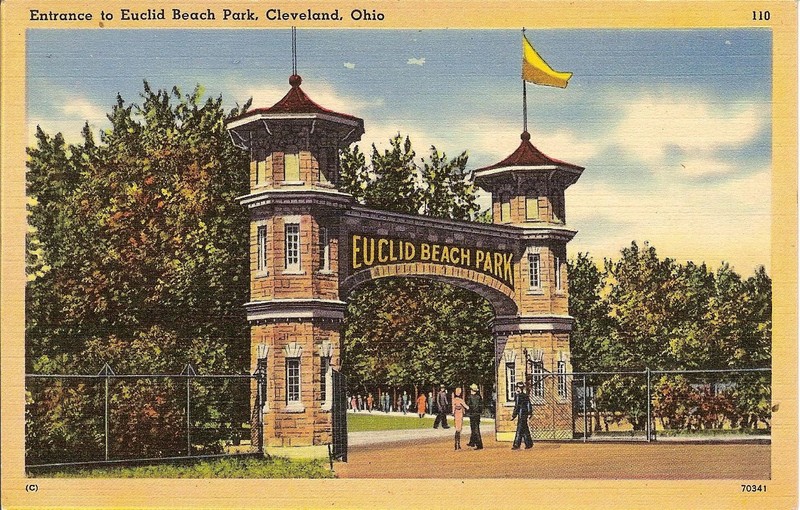
Harvey Humphrey, Louise Humphrey, (owners and managers of Euclid Beach Park)Clarence, and Russ
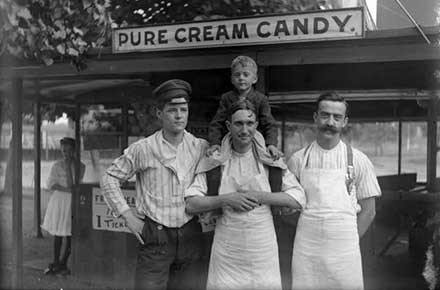
Patrons at Euclid Beach Park circa 1930s, including members of the Eppley family
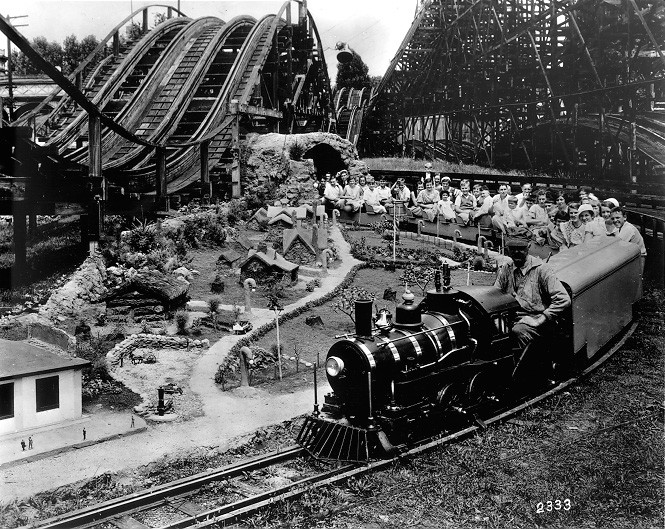
Ward 16 Picnic Day (1961) featuring Councilman Jack Russell on the "Bug" ride
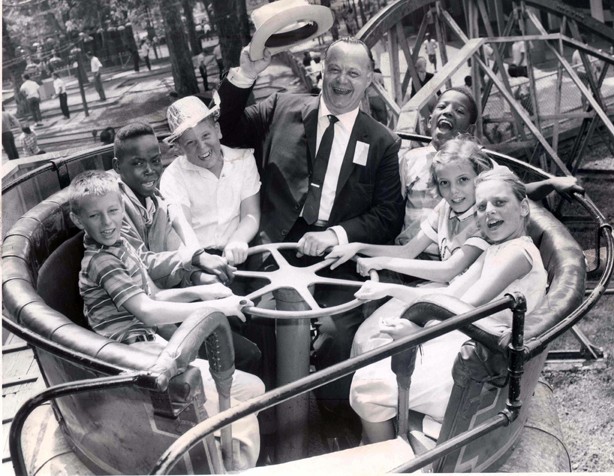
Four NBC reporters on the Euclid Beach Park rollercoaster
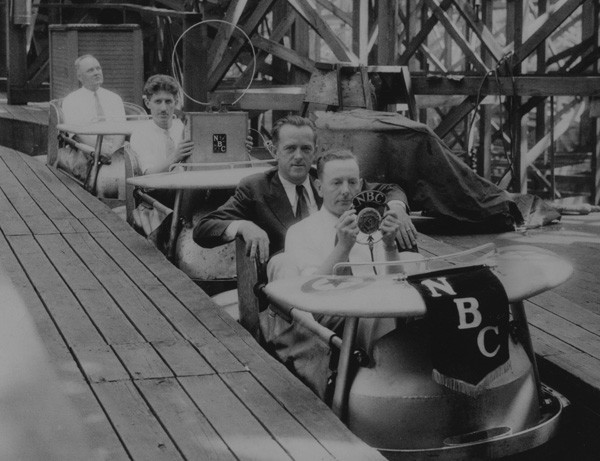
Rocket Ride at Euclid Beach Park (1960s)
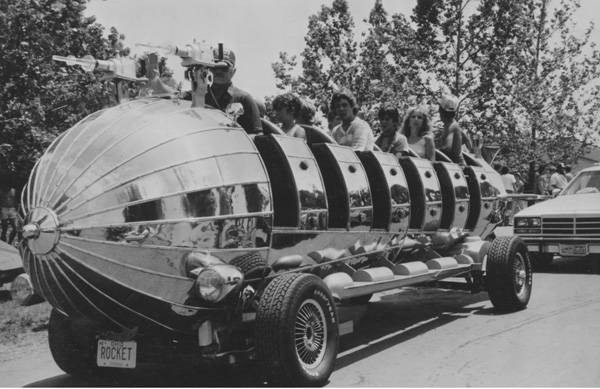
The Whip ride, circa 1917
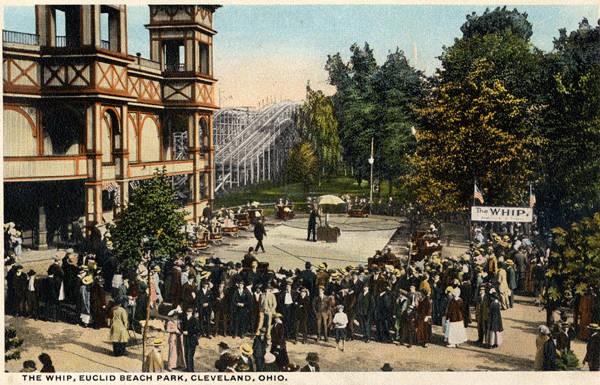
Euclid Beach Park Carousel circa 1915; "The finest carousel ever made"
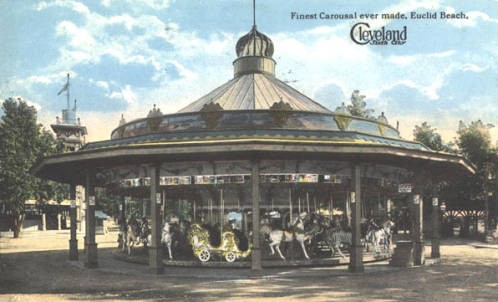
Euclid Beach Park bathhouse circa 1905
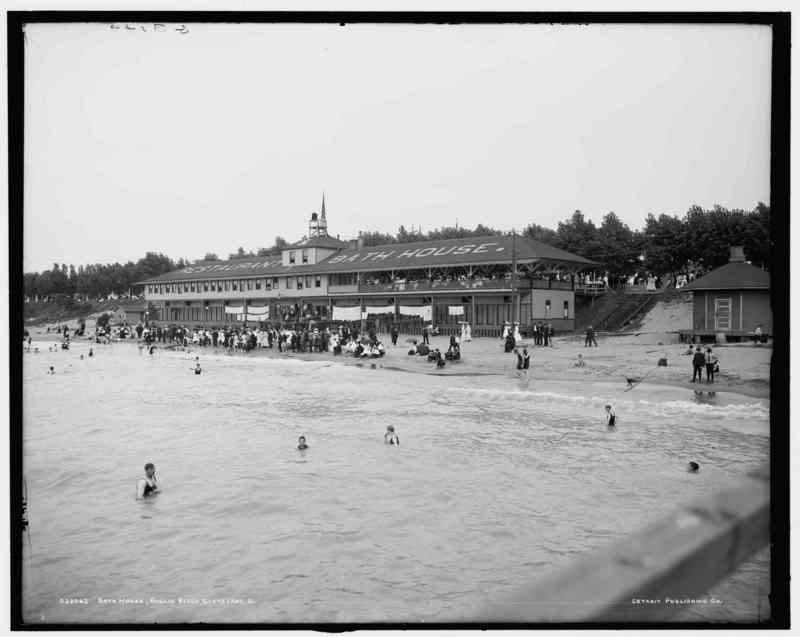
Humphrey Company Popcorn stand, pre-1900
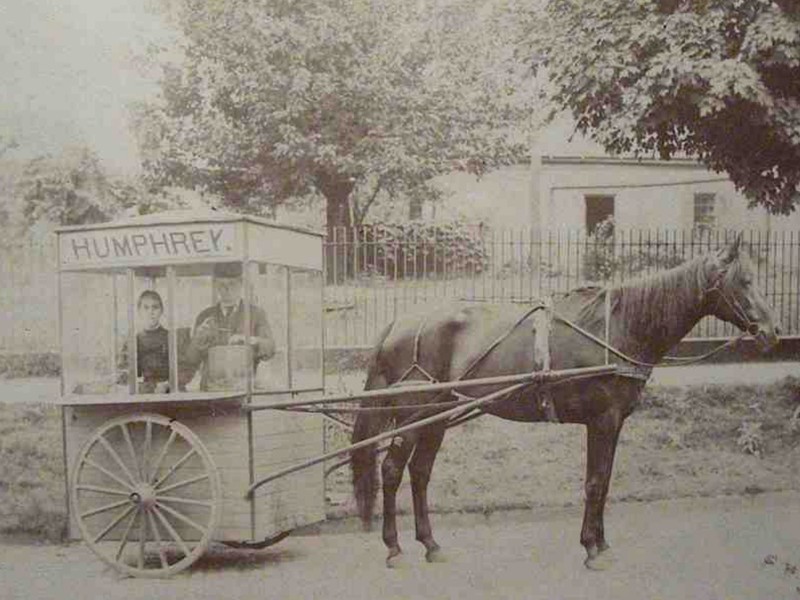
Backstory and Context
Text-to-speech Audio
Euclid Beach Park was incorporated on October 23, 1894 by a group of Cleveland investors along the southern shore of Lake Erie, and was originally managed by William R. Ryan starting in 1895. Sr. Lee Holtzman took over park management in 1897, but the enterprise was financially unsuccessful. Dudley S. Humphrey II and his six family members leased the enterprise in 1901, vowing to turn the park into a more respectable, family-friendly recreational center. Contributing factors to the park's early demise were the prevalence of gambling, alcohol, and "freak shows" that did not exude family or common Protestant values of the late 19th and early 20th centuries. The Humphreys added numerous new entertainment features, expanded beach and bathing facilities, and developed new advertising, including their "one fare, free gate and no beer" campaign. They banned the use of alcohol in the park, and those who arrived intoxicated were not allowed to enter by the Euclid Beach Park Police, who patrolled the arch entrance. Many doubted the ability of the Humphrey's to sustain the park without liquor sales, but the park's popularity increased substantially from the new marketing tactic. The park became the gathering place for social and political groups as well as historic events, such as the 1910 exhibition flight of Glenn H. Curtiss, an American aviation and motorcycling pioneer.
The Humphrey family originated from Connecticut, and were previously engaged in the lumber business and farming outside of Cleveland. Down on their luck after the loss of their farm and business, the Humphreys moved to Cleveland to pursue other ventures. They established the Humphrey Popcorn Company in 1897, which started out as a popcorn stand on Public Square and at the park years before the Humphreys took over management in 1901. The company is still in operation today, with their products grown on their 500-acre farm in Wakeman, Ohio. During the "Humphrey years" of operation, Euclid Beach Park offered a vast array of rides, attractions, and innovations in ride design, construction, and park management. A promotional brochure from the 1950s-60s advertised a variety of Euclid Beach Park amenities, including thirty rides (of which eleven were manufactured for children), a baseball diamond, five picnic headquarters, several smaller picnic areas, three race courses, an arcade, miniature golf, skee ball, a shooting gallery, and more. Featured and popular rides among park-goers were the grand carousel, dippy whip, rocket ships, flying turns, and the thriller coaster, among others.
By the 1960s, the park was beginning to face financial problems and actions were taken in hopes of recovering, including the sale of the Great American Racing Derby to Cedar Point in 1965. The park closed permanently after seventy-four seasons on September 28, 1969. The eastern portion of the original ninety acres of the amusement park now serves as a public park, still referred to as Euclid Beach Park, managed by Cleveland Metroparks. The acclaimed archway entrance is the only lasting remnant of the amusement park in place today, which was declared a historic Cleveland landmark in 1973. The original "arch" entrance was constructed entirely of wood, and stood about a quarter of a mile east of where the existing main entrance gate stands, which was constructed in 1921. The Euclid Beach Park grand carousel, first installed at the park in 1910 and manufactured by the Philadelphia Toboggan Company, returned to Cleveland in 1997 after it was purchased at an auction. Restoration efforts began in 1998 through funding from The Trust for Public Land and Cleveland Tomorrow, and the carousel was placed under the stewardship of the Western Reserve Historical Society. The carousel opened to the public for operation in 2014 at the Western Reserve Historical Society's Cleveland History Center, along with the original band organ from North Tonawanda Musical Instrument Works, which accompanied the carousel at Euclid Beach Park for fifty-nine years. Euclid Beach Park Now is a 501(c)3 non-profit organization that operates to honor and preserve the memory of Euclid Beach Park by supporting historical education and preserving physical items and memorabilia. The organization hosts annual events like "Euclid Beach Park Day" at the Cleveland History Center and "Remembering the Sights and Sounds of Euclid Beach Park" at Euclid Beach with the Cleveland Metroparks.
Sources
- Euclid Beach Park, Encyclopedia of Cleveland History. Accessed May 12, 2021. https://case.edu/ech/articles/e/euclid-beach-park.
- Euclid Beach Park Now. Accessed May 18, 2021. https://euclidbeach.org/.
Euclid Beach Park Now
Cleveland Memory Project (Cleveland State University Library, Humphrey Glass Negatives Collection)
Amusement Park Books, Inc. (Ed Chukayne)
Cleveland Memory Project (Cleveland State University Library)
Cleveland Memory Project (Cleveland State University Library)
Cleveland Memory Project (Cleveland State University Library)
Cleveland Memory Project (Cleveland State University Library)
Cleveland Memory Project (Cleveland State University Library)
Library of Congress
The Humphrey Popcorn Company
